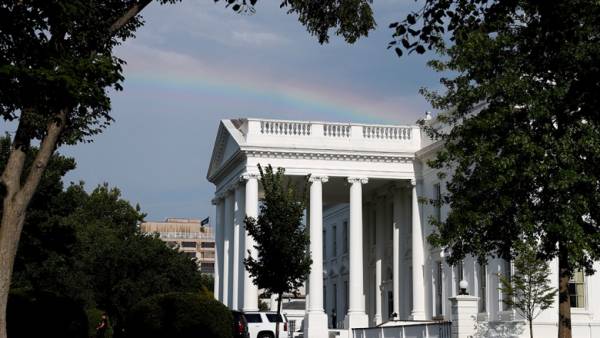Trade wars: why the United States decided not to put up with China
Trump has violated the recent ceasefire and again threatens China trade war. That directs the actions of the White House, why the idea of truce was unsuccessful and how it could lead to a new great Depression?

The actions of Donald trump subordinated to a quite specific logic, that he expressed even in the pre-election stage: “America first” (America First). He announced his purpose then the potential of the presidency to return to the United States the status of world industrial power. To do this, trump promised to return to the jobs that have been lost due to the transfer of production capacity by US corporations to countries of the Asia-Pacific region and, in particular, to China.
But the lack of jobs and migration in the U.S. — history of long-term, and trump have a specific problem that needs to be solved “here and now”. We are talking about the trade deficit with China that reached a record $375 billion by end of 2017. This problem the American President and is trying to solve.
Trump launched an attack on China in his trademark style, which is “the policy of maximum pressure” until, until you reach the desired. Previously, the style had already been demonstrated in the approach to North Korea, Russia and Iran. Trump demanded that China to reduce trade surplus in trade with the United States $200 billion by the end of 2020, in particular by reducing import tariffs on goods and services to a level similar to the US tariffs, and also to stop the state support of China’s industrial sectors, identified in terms of “Made in China 2025”.
In may, the results of two rounds of talks between the parties reached a compromise and agreed that China will reduce the trade deficit by the required $200 billion (the figure is not officially confirmed) with the elimination of tariffs on some us goods and increased imports. It seemed that this seems to be all ended well for world trade and markets: the USA got what you wanted, since China has agreed on the demands of the Americans to avoid a full-fledged trade war.
But the White House apparently wanting to put pressure on China on the eve of another round of negotiations in early June, in his characteristic manner on may 29, has threatened China with the introduction of a 25%-s ‘ duties on Chinese goods worth $50 billion In media write that trump was offended by criticism for being too soft attitude towards China. Only, most likely, the American President driven not by resentment, but only an economic interest.
Where to find the moneyIncrease in imports by China of US $100 billion by 2020 is economically looks real, but the opportunity to reduce our trade deficit by $200 billion is the objective and reasonable doubt.
As noted by the Bank J. P. Morgan in its analytical study to achieve the agreement goal, China would need to increase in the United States procurement in those industries where existing U.S. production capacity will be able to meet the increased demand from China. Try to gauge how China can increase purchases in the United States. A simple calculation gives the following figures.
Planes. In this segment, 63.8% of the total imports of China in 2017 were in the United States ($25.5 billion). If China is to meet 100% of its needs in airplanes across the US, it will add about $10 billion. Meanwhile, the Boeing company is already experiencing problems with insufficient production capacity to meet growing demand.